
Dynamic Response Survival Tactics
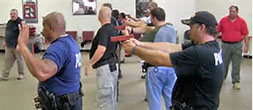
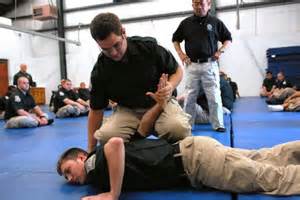
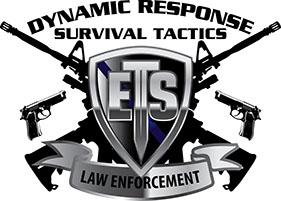

Combat Weapons Training
Weapon Training
Instinctive Tactical Shooting is a unique, fast paced method of training for real life combat/tactical shooting. This course is physically demanding and radically different than standard American law enforcement firearms training. It teaches you how to aim in a quick, natural way without using your gun sights. You will become proficient in rapid identification and acquisition of targets. Learn to advance to your target, properly using cover and concealment. Learn the Israeli method of quick magazine replacement. This method of firearms training employs firing under simulated combat conditions. Learn to shoot under simulated return fire. You will repeatedly fire your weapon under both physical stress with a high heart rate and under psychological stress. You will shoot like you do in combat, with a high level of adrenalin. Your mind will record your pistol's operation on your body so that under live fire, shooting is instinctive, leaving your mind free to focus on your attacker.
NOTE: Handgun courses MUST be taught in consecutive order.
Instinctive Tactical Handgun Level 1 (Course Length 2 days)
In this course, the trainee will be presented with the best features used in the Israeli handgun combat system. This course will teach you step by step the methods taught to elite police and special ops units in Israel and adopted by professionals worldwide.
Trainees will learn how to confront a threat, draw from and fire - all in one second or less! Students will learn fundamentals of urban fighting: concealed carry conditions, the secrets of good peripheral vision and employment of lethal option tactics against multiple threats, shooting with one and two hand, and progressing to advanced close combat fighting techniques.
Course Topics Includes:
- Point shooting verses aimed shooting
- Proper Grip and Correct trigger control
- Charging and Clearing the weapon
- Stance, Draw, Shoot
- Quick magazine change
- Ready gun positions
- Stage 1, 2 and 3 malfunctions
- Multiple targets
- Closing range to the target - running and braking methods.
- Kneeling position, Back, Side, Prone
- One/Two-hand shooting
Instinctive Tactical Handgun Level 2 (Course Length 2 Days)
This course maintains a highly intensive structure, which is designed to equip the trainee with the key fundamentals of tactical pistol shooting and covers the specific skills applicable to normal every day or hostile environment situations.
You will learn to become faster, focused, confident and accurate with the handgun in any high stress situation, while maintaining a high level of safety and situational awareness, overcoming obstacles and neutralizing threats effectively.
Aggressiveness, decisiveness, and speed are integral elements of this system, and a combat mindset is stressed. Stress is a mandatory element introduced to this class, to expose trainees to pressure associated with actual events. This approach is geared towards deadly force confrontations when your life is in on the line rather than a shooting competition, where often skills required to compete simply fail under actual life event stress.
Course Topics Includes:
- Firearm Safety
- Review of Course #1
- Stance and Advanced Footwork Movement
- Turning and Drawing
- Rapid Target Acquisition
- Multiple Targets
-Balancing Speed and Accuracy
- One Hand Magazine Change
- One Hand Charging the Weapon
- Stress Fire Course
- Barricade & Obstacle Shooting
Instinctive Tactical Shooting Level 3 (Course Length 2 Days)
The Israeli Tactical Pistol operator course is built to include all features that are found in training of operators and units that are deployed in high-risk zones. This course is geared towards experienced pistol shooters, police, military and security professionals.
This is a high level training course that will challenge you regardless of your previous shooting and training experience. It is very intense and designed for the ones that are fit, and have proven their skills with prior combat training courses.
Course Topics Includes:
- Close Contact Firing
- Weapon Retention
- Reactionary (off) Hand Fire / Reloads
- Barricade Shooting
- Obstacle Shooting
- Extreme Close Range Fire
- Long Distance Pistol Shooting
- Dynamic Movement to Cover
- Shooting from Difficult Positions
- Shooting from a Vehicle
- Clearing Rooms
- Firing in Pairs
- V.I.P. Drills
- Advanced Tactical Scenarios
Tactical/Combat Rifle (Course Length 2 Days)
This course focuses on the teaching of the Israeli Combat Method of the M4/M16 weapon. (AR-15) The M-4/AR-15 course is design to introduce all the skills sets needed for building the confidence to work with the AR-15 under the most demanding conditions and situations as taught to the Israeli Defense Forces (IDF). Our training is intense, realistic and physically demanding. The operator will gain hands on proficiency and confidence once completed this intensive training course.
Course Topics Include:
- Safety
- 5 Points of Contact
- Loading techniques and fighting stance
- Combat reloading techniques
- Dynamic assault and shooting on the move
- Urban Combat Point Shooting: (no aiming)
- Combat Shooting Positions
- Quick Magazine Changes
- Malfunctions
- Speed and Accuracy
- Closing Distance
- Long Distance Shooting
- Aiming and Sight Alignment
- Hand-to-Hand Combat with carbine
- Urban obstacle course
*Because we are teaching the Israeli Method, and the M4/M16 are the standard issue rifles and carbines for the IDF, these courses will be limited to M4/AR-15 style weapons in any caliber.
Tactical/Combat Shotgun (Course Length 2 days)
This firearms training course focuses on tactical speed shooting and development of aggressive gun-handling skills during tactical deployment of the shotgun for personal protection and home defense for civilians and law enforcement.
Students will develop reflexive gun-handling skills that will enable them to quickly and efficiently engage threats while performing multiple complex tasks.
This firearms training course takes the student beyond the basics of the shotgun and introduces the student to deployment techniques that are critical when deploying the shotgun for personal defense.
Shotguns must be pump action, 12 or 20 gauge and have a side receiver ejection port/loading port. Lever-action and exposed hammer shotguns are not allowed!
Course Topics Include:
- Shotgun training safety
- Principals of personal defense
- Deployment methodology and concepts
- Use of the shotgun self defense
- Mental conditioning and combat mindset
- Combat fundamentals of shooting the shotgun
- The natural action stance.
- Quick Loading/unloading the shotgun
- Use of the tactical sling
- Presentation from low ready, high ready, indoor ready positions
- Combat gun-handling skills
- Moving off the line of force
- Threat assessment and area scanning
- Ammunition management and tactical reloading techniques
- Transition to secondary weapon system
- Malfunction clearance drills
- Multiple threat engagement
- Engaging threats during continuous movement
- Fighting with the shotgun at CQB distances
- Introduction to tactical speed shooting concepts
- Weapon retention issues.
- Stress training
- Barricade and Obstacle Shooting
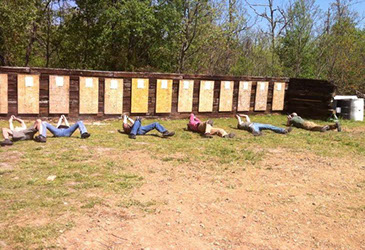
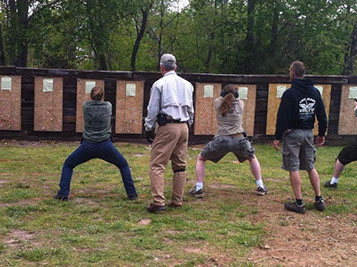
.jpg?crc=10032798)
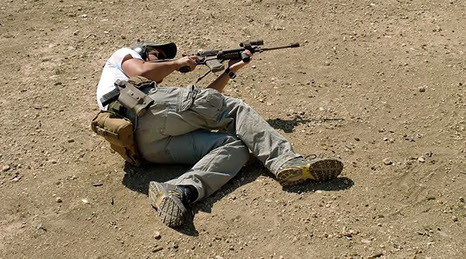
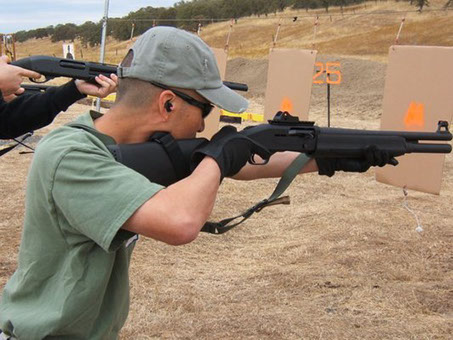
Basic SWAT Training
Course components for training any SWAT, ERT, SOG, SRT or any group that needs to be trained to work as a UNIT.:
-Team Formations
-Team Movement
-Stealth Entry
-Dynamic Entry
-Room Combat
-Room Clearance
-Actions on Contact
-Communication
-Push vs. Hold
-Individual Movements
-Victim Extraction Techniques
-Vehicle Ambush and Counter Measures
-Mounted & Dismounted Officer/Citizen Downed Rescue
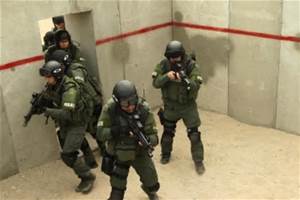
Tactical Handcuffing
Course Description and Objectives:
-Identify the different types of handcuffs
-Identify the different subjects that will be encountered
-The three tactical considerations of handcuffing
-When can a person legally be placed in handcuffs?
-Discuss the safe & proper removal of the handcuffs
-Identify when the officer should double lock the cuffs
-Identify mechanical failures commonly experienced
-Search procedures
-Handcuff maintenance
-Proper grip on the handcuff
-Cuffing from the standing position
-Cuffing from the kneeling position
-Cuffing from the prone position
-Escort procedure while subject is in handcuffs
-How to control resistance from the escort position
-Proper way to stand a subject up from the kneeling or prone position.
-Take down when resistance is encountered during the cuffing procedure.
*Students will receive training at the static and fluid levels.

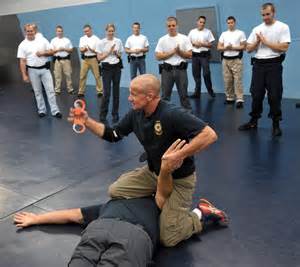
Edged Weapon Defense
The student will learn both offense and defense against edged weapon attacks.
Course topics include:
-Lines of attack
-Disarming techniques
-Types of grips on an edged weapon
-Types of edged weapon strokes
-Lethal areas of the body
-Time and distance studies
-Timetable of death from attacks
-Response and reaction time
-Proper hand and body position
-Attacks and counter attacks
-Vigilance and awareness under stress
-Different types of edged weapons
-Defense against static attacks
-Defense against fluid attacks
-Defense against stalking attacks
-Defense against spontaneous attacks
-How to control upon disarming
-Legal considerations in use of force
-The effects of combat stress on the body
-How to stay ahead of the ODDA Loop Theory
-Types of combat Knives for every day carry
-Deployment of the combat knife from offensive and defensive positions
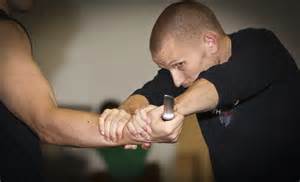
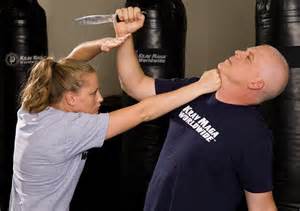
Terrorism Response Tactics
These courses include:
- Rapid response to active shooting events
- First Responders operating in rural terrain
- Exterior response to active shooter events
- Self aid and buddy aid
Threat Assessment
Threat Assessment/Threat Management
Course Description:
ETS, Inc. can provide consulting services for any church, business, company, civic organization or event, for the purpose of threat assessment, and can assist in the implementation and training for managing any type of threat. Or ETS, Inc. can provide protection/security services to the client ourselves. All of our protection specialists are highly trained in the protection industry.
Services and Training:
- Consulting
- Security
*Armed or static
- Protection details
* (VIP/Executive/Dignitary)
- Home invasions
- Car jacking
- Personal defense
- Expert witness services
- Firearms training and certification
- Provide threat assessment and an analysis on implementation of hard and soft security.
Instructor Development
Instructor Development / Instructor Techniques
This training course is designed to teach and review Instructional Methods designed to enhance a student’s ability to learn Survival Skills & Techniques, increase his/her confidence level, and assist in successful applications of the techniques. It also introduces training protocols, including certification procedures and course protocols. It explains the Physiology of the human body and how the brain receives and hardwires training information. It explains how to instill confidence into the students and different classroom presentation methods. It explains all of the variables that affect survival and combat training. The Motivational factors of learning will be explained, as well as the 3 sequential stages of training. We will learn the Principle of “Conditioned Stimulus Response Training” as well as the Psychology of Survival Training. And also how to conduct your own Training Needs Analysis & Lesson Plans for your organization.
Upon completion of this course, each Instructor will receive Certification from Elite Training Specialists, Inc. for completion of the Instructor Development/Instructor Techniques, as well as a color Certificate.
TERMINAL PERFORMANCE OBJECTIVES:
Upon successful completion of this course, the student will possess the knowledge and skills necessary to properly prepare a lesson plan and complete a classroom presentation using principles delineated in this course of instruction.
INTERIM PERFORMANCE OBJECTIVES:
1. The student will be required to complete a (3) three minute presentation a topic to be assigned by the instructor.
2. The student will be able to summarize concepts associated with adult learning and effective listening.
3. The student will be able to develop and prepare learning objectives, a complete lesson plan and test questions.
4. The student will be able to demonstrate proper instructional methodologies and proper presentation guidelines.
5. The student will be able to demonstrate proper classroom management techniques.
6. The student will be able to demonstrate proper use of audio/visual learning aids.
7. The student will complete a (10) ten minute presentation.
8. The student will be to summarize concepts associated with managing training records.
9. The student will be able to summarize the importance of training needs assessments and job task analyses.
10. The student will successfully complete a (50) fifty minute presentation.
11. The student will be able to generalize the development of Curriculum Design and Development.
Course Break Down:
1 -Adult Learning
Terminal Performance Objective:
Upon completion this unit of instruction, the participant will summarize the concepts associated with adult learning.
Interim Performance Objectives:
The student will be able to explain and apply the following:
• Definitions of Learning and Teaching
• Domains of Learning
• Steps of the Learning Process
• Characteristics of the Adult Learner
• Structured Teaching for Adults
• Various Presentation Methods for Teaching Adults
2 - Presentation Guidelines
Introduction
Delivering your presentations effectively involves using a proven four-step process:
1. Plan
2. Prepare
3. Practice
4. Present
3 - Lesson Planning and Learning Objectives
Terminal Performance Objective:
(TPO)
The planned, overall outcome of your presentation and training course.
Interim Performance Objective:
(IPO)
The steps that you are going to take, one by one, to achieve the TPO.
*An Objective describes an intended result of instruction, rather than the process itself.
*A Course Description is a general statement explaining what you are going present to the students.
4 - Testing and Evaluation
The objective of all types of training should be to “CHANGE BEHAIOR PATTERNS TO FIT A STANDARD”.
The TEST is used to measure the achievement of the course objectives. Only observable behavior may be judged or measured.
The more comprehensive and objective the test, the higher its validity.
5 - Training Methodologies
Definition:
The Way or the (Method) we go about Training, Teaching or Instructing.
Since the beginning of strategic warfare, a special group of individual has been tasked with the training Warriors to survive in combat. This profession which in many thousands of years old, has influenced the rise and fall of nations throughout history. It is the only recognized profession that trains students protect lives by taking or injuring another human life at the same time. It is also one of the few professions in which the instructor’s competence may be the difference between the life and death of the student or the general public.
Throughout the centuries, survival training has changed very little. Survival Instructors have struggled with the lack of resources and the necessary time to adequately train their students. Even with today’s advanced weapon systems and technology, instructor must compensate for human limitations.
Instructors who teach survival skills, (i.e defensive tactics, close quarter combat or any other type of Survival Strategies) are still faced with teaching students a physical skill.
Variables that Affect Survival and Combat Training:
Unlike other motor skill training, survival skills will be performed in the stress of combat. As such, motor skill training inherits a fair degree of learning and performance limitations. Although the learning roadblocks are multiple, there are three constant variables that directly affect survival and combat training.
Exceptional Instructors have the ability to create a learning cycle that is constantly feeding upon itself. In the center of this cycle is the goal of creating and increasing the student’s confidence in a specific set of skills. Confidence minimizes the physiological effects of stress and places the student in a physical parameter for optimum combat performance. If the student does not have confidence in the technique or survival skill, they will never use it in the stress of Combat.
(Bruce Siddle – PPCT Management Systems)
Definitions and Theories of Martial Science:
"Train like you fight; fight like you train", quote by unknown smart dude
“Indecision is the mother of all F....Ups", mantra of all soldiers
INTRODUCTION:
Both quotes above are very specific to this chapter as it deals with how to train to achieve your required goals. Some people actually train to fight, others not so much, worse still many students and instructors alike don't actually know the difference. Whether you train to fight for sport, self-defense or just the pursuit of knowledge it is critical that you understand the implicit and explicit training paradigms and how to use both methodologies to achieve your desired outcome.
Objectives:
•Understand the meaning of Implicit and Explicit with regards to Training & Response
•Ability to assess your existing training programs and modify them for optimal response goals
•Ability to disrupt and destroy your opponent’s decision and response capabilities during a combat situation
Pre-requisites:
•Sense of Humor
•Ability to learn then ignore big words
Definitions: Unfortunately even among neuropsychologists many of the terms and definitions relating to this subject are a grey area. With that in mind I will define what we mean by the terms in the following pages. If there are some neuropsychologist's who take exception please do not hesitate to contact me so I can show you my implicit response :)
Conscious: denoting or relating to a part of the human mind that is aware of a person's self, environment, and mental activity and that to a certain extent determines his choices of action.
Subconscious: the totality of mental processes of which the individual is not aware; unreportable mental activities.
Cognitive: of, relating to, being, or involving conscious intellectual activity; pertaining to the mental process of perception, reasoning and judgment, etc.
Non-cognitive: adjective of cognitive, not cognitive, not related to the process of acquiring knowledge through the senses or reasoning.
6 - Training Needs Assessment and Job Task Analysis
TERMINAL PERFORMANCE OBJECTIVE:
At the conclusion of this course, the participant will generalize concepts associated with conducting a job task analysis and training.
INTERIM PERFORMANCE OBJECTIVES:
1. The participant will define trainer.
2. The participant will generalize the training process.
3. The participant will generalize the role of the manager in training.
4. The participant will summarize the steps of the training process.
5. The participant will summarize the difference between training problems and management problems.
6. The participant will summarize the definition of Job Task Analysis
7. The participant will list the parts of a job task analysis.
8. The participant will complete a job task analysis.

Executive / Dignitary Protection
VIP Protection – (Executive/Dignitary Protection)
Our VIP Protection/Executive Protection courses are among the best in the world, teaching the most advanced security and bodyguard techniques as taught by the elite security professionals in Israel (the most secured country in the world).
Basic Dignitary Course – (When only one or two bodyguards are required)
(Course Length 3 Days)
This course ensures the development of a professional Dignitary Protection Agent. This course will teach the important concepts and techniques needed for the personal protection of dignitaries and their families. We motivate all participants to develop rapid and correct solutions for different situations. We teach mental exercises that force a constant high level of awareness. Techniques include: proper walking with the individual being protected, escorting the VIP by foot, screening, protection and extraction. Working in pairs, communication and teamwork is crucial. Weapon defense is used in this course.
Advanced Dignitary Protection – (When three or more bodyguards are required)
(Course Length 3 Days)
Designed to advance the skills learned in Basic class. This course will develop a high level of sophistication in the professional Dignitary Protection Agent. This course will cover the different phases in planning. Motives and methods of attack; levels of awareness; counter surveillance operations; fooling the enemy; VIP and family; route planning; vehicle and room searches; use of vehicles; entering and exiting the vehicle with the protected person; combat situations; evacuation of the VIP with and without vehicle; carrying pistols and rifles; shooting from protection position; multiple targets; deployment from an ambushed vehicle; and evacuating the dignitary.
Dignitary Protection Unit Development - when a full team is required – or more with the use of security vehicles
(Course Length 5 Days)
Course builds on skills and tactics learned in the Basic and Advanced training courses. Focus is on development teamwork of the Dignitary Protection Unit. Learn to incorporate information learned during the advance into seamless operations using multiple team members in a variety of settings. Multiple role-playing scenarios are employed to critique performance and improve individual and team skills. The use of multiple team members and multiple vehicles, deployment from an ambushed vehicle, and evacuating the dignitary.
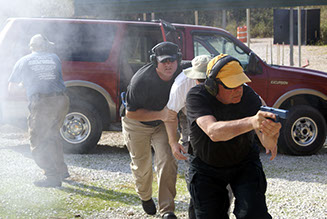
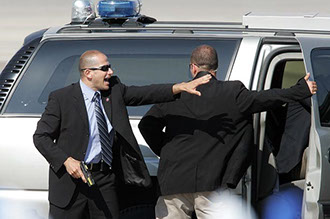
Combat Cane
This very unique Combat & Self-Defense system utilizes the Walking Cane. The ultimate Self-Defense Tool. You carry it anywhere, Police Departments, Court Room or on an airplane…..it’s the greatest support device.
You can carry it anywhere because it is covered under the American’s with Disabilities Act, and there are no restrictions on having to prove a physical condition or impairment in order to carry your Cane with you, anywhere at any time!
Regardless of your physical condition or your age, you can learn to utilize this weapon and combat system.
You will learn how to use the 4 parts of the cane, the Crook, Tip, Horn and Shaft to defend yourself and to use in a combat situation.
It is truly an incredible Self-Defense Tool.
The Cane for Self-defense:
Many people do not like the walking cane for Self-defense because it does not go along with their age, attire or, they simply do not want to be associated with someone who may be disabled. They do not wish to have the stigma that is often associated with the cane.
There is a strength in that appearance. The strong appearing to be weak might be all the edge you need in a lot of physical confrontations. That’s a "Combat Ruse." A young attacker who is strong might make the incredible mistake of thinking you are easy prey, to find out all too late that you’re not.
The Cane gives even more reach than the average telescoping baton in some cases and is legal in more areas than that weapon.
Perhaps the greatest strength of all is in the presentation. The Cane is already "drawn." You can strike immediately with it. There is an old saying in Gun Circles, "The fastest draw is to have the gun in your hand when the trouble starts." This applies to the knife as well, and the stick. The strength of the Cane is, it is a Cane! It’s not a gun or a knife, it is already out in the open and you can strike instantly with it.
You will learn all of the angles for blocking with the cane and all the angles or attack using the cane as impact and striking weapon.
An incredible self-defense weapon that can be carried and used anywhere!
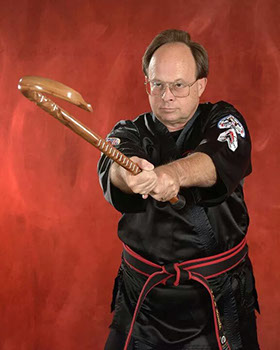
Grand Master Professor Wayne Carman
(Mr. Welch's Instructor)
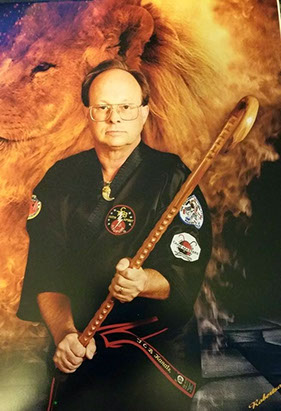
Combat Canes and Training Canes
are available for purchase
Personal Protection
Course Description:
ETS, Inc. can structure a personal protection program for an individual
for private lessons, a family or a group of individuals.
We can also structure a personal protection program for any company or
office and for the employees of any corporation.
We can also structure a training program of any length for professional persons
such as nurses, EMTs, paramedics, fire fighters, school personnel,
and flight attendants, etc.
The program will focus on awareness, planning, preparation and threat
recognition signs and cues, both verbal and non-verbal. It will consist of
physical practice on multiple self-defense techniques ranging from
physical assault to assault with deadly weapons.
The structure of the program can be as simple, detailed or complex as
the client requests and can cover any and all subject matter as desired.
The length of the program is totally up to the client.
Elite Training Specialists, Inc. has over 35 years’ experience in creating
and personalizing any training and defense program to the
specifications of the client.
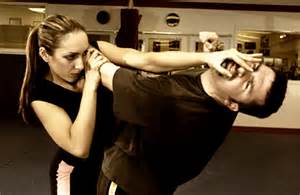
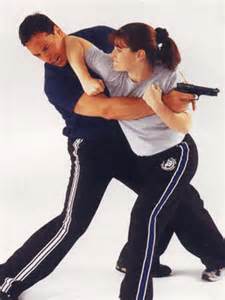
Israeli Tactical Knife Fighting
Israeli Tactical Knife Fighting Come and learn the same skills as are taught to the Israeli Military, Special Forces and other Israeli Professionals.Israeli Tactical Knife Fighting Class / Knife Defenses – Can you defend yourself against an attacker with a knife?A Knife is a Force Multiplier. Perfectly legal to carry, and very lethal in an Assaultive situation.Our Israeli Tactical Knife Fighting (ITKF) class can help you learn how to even the odds. Knives are legal to carry and easily accessible which makes it a very attractive weapon for criminals. The mindset of ITKF is to even the odds. If a knife is pulled on you, you should not defend the attack with open hands if you can deploy a knife to even the odds. A skilled ITKF practitioner defending against an unskilled attacker has a huge advantage in the outcome of the attack.The ITKF Program is not restricted to law enforcement, military or approved civilians, anyone can take our classes. This program teaches use of the knife as a defensive tool and as an offensive weapon, when you are being attacked and justified to use Deadly Force in Defense of your life or the life of someone else. It brings Professor Garry Welch and his extensive expertise in use of edged weapons to the classroom setting.ITKF covers all facets of using a knife against an assailant who is also armed with a knife or any other Deadly Force Object, or an empty hand attack from a much larger, stronger and more skilled individual, when your very life is on the line. You will learn effective deployment strategies to using reverse grip tactics to draw the attacker into an effective counterattack.
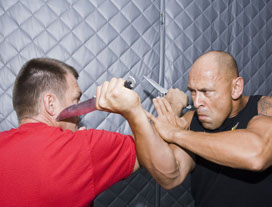 In learning the Knife Fighting System, you will learn the point on the body that are considered Lethal Points, thereby learning the parts of your body that are the most vulnerable.Knife-fighting training is an excellent way to develop a keen understanding of how a knife is used in an attack. It is also a great way to develop a sense of the flow of an assault with a knife, improve footwork for all programs, and improve recognition of knife motion and patterns. All of this not only serves to turn students into effective knife fighters, but also importantly helps students greatly enhance their ability to “read” the existence and direction of travel of a knife being used against them. This is a critical ability to possess and to develop for the empty hand versus knife tactics taught in the Krav Maga System. This high level class teaches the defender how to use a knife as a defensive weapon if the attacker deploys an edged weapon. The best strategic mindset in any survival situation is to at least even the odds if not better the odds. This class completely covers all skills needed to significantly improve your odds of surviving and to dominate an encounter against a knife wielding attacker.This class is open for enrollment to both Male and Female Students. These classes are also available to bring to any Law Enforcement Agency, Security Company or Military Unit. Train to Live….. Live to Train!!!!! "In a time of great crisis...We never rise to the level of our expectations...We will always fall to the level of our Training!!"
In learning the Knife Fighting System, you will learn the point on the body that are considered Lethal Points, thereby learning the parts of your body that are the most vulnerable.Knife-fighting training is an excellent way to develop a keen understanding of how a knife is used in an attack. It is also a great way to develop a sense of the flow of an assault with a knife, improve footwork for all programs, and improve recognition of knife motion and patterns. All of this not only serves to turn students into effective knife fighters, but also importantly helps students greatly enhance their ability to “read” the existence and direction of travel of a knife being used against them. This is a critical ability to possess and to develop for the empty hand versus knife tactics taught in the Krav Maga System. This high level class teaches the defender how to use a knife as a defensive weapon if the attacker deploys an edged weapon. The best strategic mindset in any survival situation is to at least even the odds if not better the odds. This class completely covers all skills needed to significantly improve your odds of surviving and to dominate an encounter against a knife wielding attacker.This class is open for enrollment to both Male and Female Students. These classes are also available to bring to any Law Enforcement Agency, Security Company or Military Unit. Train to Live….. Live to Train!!!!! "In a time of great crisis...We never rise to the level of our expectations...We will always fall to the level of our Training!!" 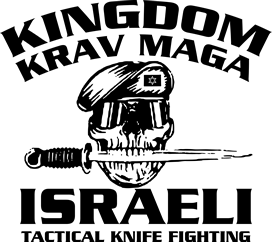
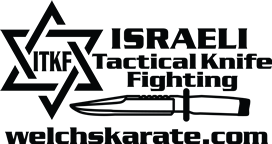


.png?crc=4230931426)
